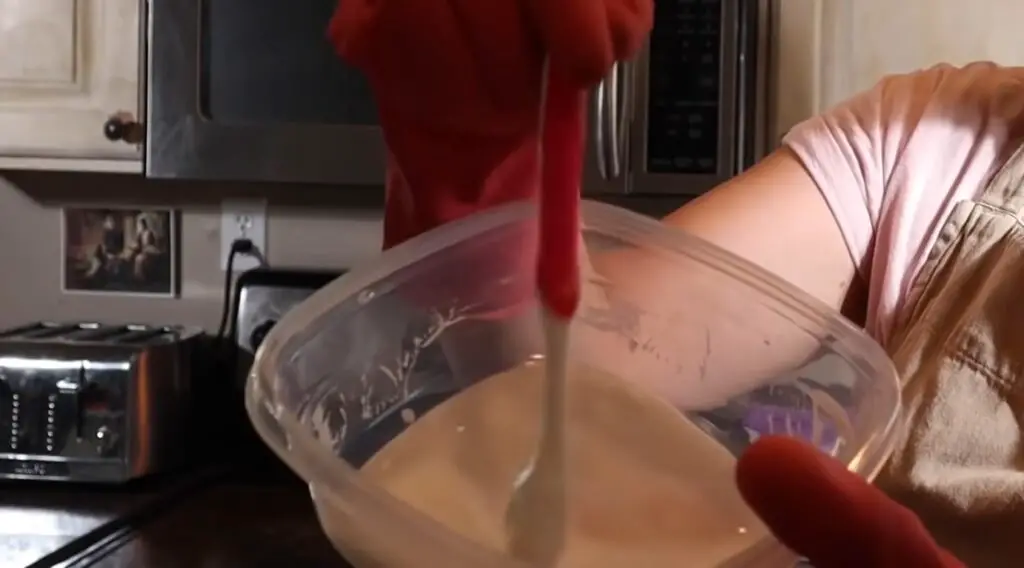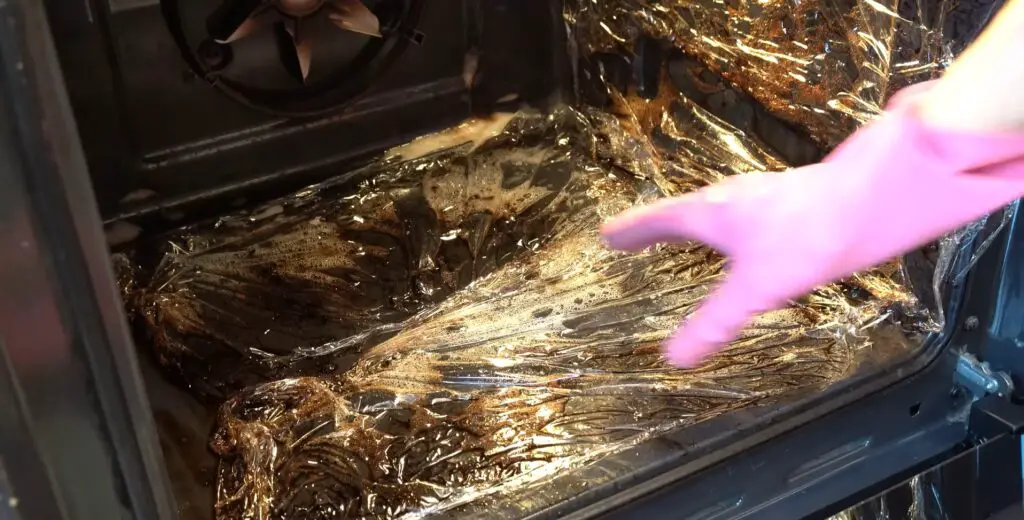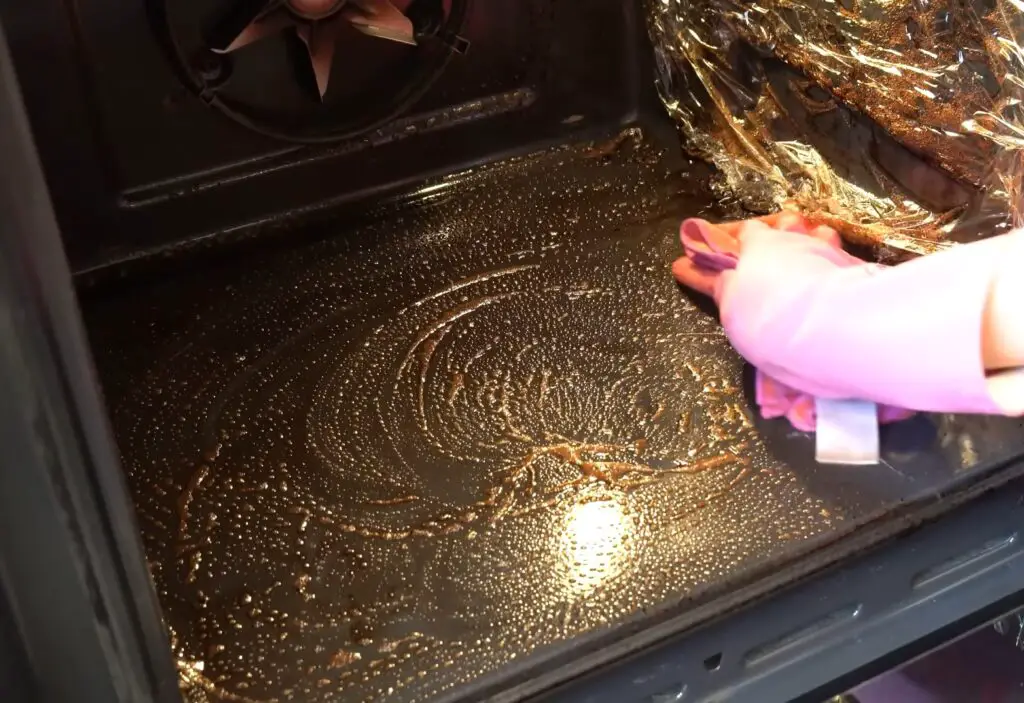This site is a participant in the Amazon Services LLC Associates Program. We are compensated for referring traffic and business to Amazon and other companies linked to on this site
The oven is one of the most used tools in the kitchen, and it is not just a device for heating food, but rather a daily partner in preparing your favorite meals.
Since it is used regularly, it may become contaminated with food waste, fats, and oils.
Hence the importance of cleaning the oven periodically. Regular oven cleaning is not just a household chore, it is an investment in your health and the health of your family.
Not cleaning the oven regularly may lead to the accumulation of grease and food residue, which first causes an unpleasant odor that is emitted when operating. Not only that, these burnt remains may lead to the emission of smoke and fumes that harm health.
one of the places in the oven that usually didn’t take much cleaning attention is it bottom as its hidden & no one can see it so may not bother cleaning it , however the reality is the bottom of your oven “in my opinion ”
responsible for 50% of the bad smell you may found in your kitchen & oven as well
therefor in this post I will give you a full guide for how to clean a burnt oven bottom? in a quick & easy way.
now lets start..
What are the reasons behind the burning of the bottom of the oven?
The bottom of the oven is mainly designed to withstand very high temperatures, so why does it burn?
In fact, the bottom of the oven itself does not burn in most cases, but it is the food remains that burn, and with the high temperatures at the bottom of the oven, they stick to it, thus the bottom of the oven turns into blocks of burnt and sticky food.
Therefore, before we explain the ways to clean the bottom of the oven, let us know the reasons behind the burning of the bottom first and how to avoid them
1- High temperature.
If the oven is set to a higher temperature than required for the recipe, it may cause the food to burn and some of it to fall to the bottom of the oven.
2- Using inappropriate utensils.
Pans without raised edges may allow sauces and fats to drain out and drip to the bottom of the oven.
3- Exceeding the cooking time.
Leaving food in the oven for a longer period of time than required may result in it burning and part of it falling into the oven.
4- Do not use baking paper or oven sheets.
Using baking paper or oven sheets can prevent food from falling directly onto the bottom of the oven.
5- Overfilling
Filling pots or trays with too many ingredients may cause the food to spill during expansion or boiling.
6- Change the temperature quickly
Opening the oven door while cooking or changing the temperature quickly may cause the food to disturb and spill.
7-stirring irregularly.
Some types of food need to be stirred from time to time to avoid burning at the bottom and falling into the oven.
8- Put the food directly from the freezer into the oven
Placing frozen food directly in the oven may create water droplets that cause some of the burnt ingredients to fall to the bottom.
What are the materials required to clean the bottom of the oven?
In order to clean the bottom of the oven effectively, there are two types of materials that you can use: natural materials or chemicals
Let’s start first with natural materials
Natural materials.
Vinegar: Acts as a disinfectant and degreaser.
Bicarbonate of soda: Helps remove stains and unpleasant odors.
Lemon: Acts as an antiseptic and adds a refreshing scent.
Water: for making cleaning solution and for rinsing.
Chemicals.
Commercial oven cleaners: These are available in most stores and are specifically designed to remove grease and burned-on food.
What is better: natural materials or chemicals?
Natural materials.
It is safer for the environment and for people who are sensitive to chemicals. It is also cheaper and available in most homes. But you may need to put in more effort and time to achieve good results.
Chemicals.
It may be more effective in getting rid of stubborn stains and grease quickly. But it can be harsh on the environment and may cause eye and skin irritation.
My personal experience.
Although I am a fan of preserving the environment, my experience has confirmed that using natural materials with a burnt oven bottom filled with food scraps is difficult and exhausting.
So here’s what I do personally: If the bottom of the oven is burned and very full of food residue, I use chemicals to make my job easier. However, if the bottom of the oven is moderately burned, I use the natural solution, which I will explain to you later.
To summarize: If the bottom of the oven is very dirty and burned, then using chemicals is the most logical solution. However, if the burning is moderate or low, then using a natural solution is the easiest and most effective.
Tools required to clean the bottom of the oven.
Hard brush: for scrubbing and removing large food residues.
Sponge: for cleaning stains and rubbing burned areas.
Rubber gloves: To protect your hands, especially if you are using chemicals.
Bowl: for mixing materials and making cleaning solution.
Sprayer: To apply vinegar or solution to burned areas.
Clean cloth and water: for rinsing and drying.
How to clean a burnt oven bottom?
Preparation:
Securing the oven: Before you begin, make sure the oven is switched off and unplugged from the power source. If you have used it recently, wait until it has cooled completely.
Remove racks: Pull racks out of oven and set aside. You can clean it separately using hot water and soap.
Cleaning using natural materials.
- 1- Mix the ingredients: In a bowl, mix ½ cup of baking soda with a few tablespoons of water to form a paste. You may need to adjust the amount until you get a thick, sticky consistency.

- 2- Applying the paste: Apply the paste to the burned areas and stains on the bottom of the oven. Leave it for 5-6 hours or better if left overnight and cover it with food wrap.

- 3- Rubbing: After leaving the paste for a sufficient period, use a sponge or brush to gently massage the burned spots, focusing on the most contaminated areas.

- 4- Rinse: Using a clean cloth dampened with water, wipe the oven to remove any remaining mixture.
- 5- Use vinegar: If there are residues that are difficult to remove, you can spray vinegar on the area. The vinegar will evaporate when it reacts with the bicarbonate of soda, which helps in cleaning the remaining stains.
- 6- Final rinse: Wipe the oven again using a clean, damp cloth to ensure all chemicals are removed.
Cleaning with chemical detergents.
1- Read the instructions: Before using any chemical product, read the instructions on the packaging carefully.
2- Apply the cleaner: Spray the cleaner on the burned areas according to the instructions.
3- Leave it to work: As stated in the instructions, leave the cleaner for a specified period.
4- Rubbing: Using a sponge or brush, gently rub the treated areas.
What are the things you should avoid while cleaning the bottom of your oven?
Avoid using sharp tools.
sharp knives and spoons may scratch the interior surface of the oven or damage the coating.
Do not use strong cleaners that are not compatible with your appliance.
Some chemical cleaners may be too strong for your oven and may damage the surface or leave chemical residue that affects your food.
Avoid using large amounts of water.
Excess water may make the oven difficult to ignite the next time and may damage the electrical components.
Don’t use regular soap.
soap may leave a film inside the oven that is difficult to remove and may affect the flavor of the food.
Avoid cleaning electrical parts directly: Make sure to avoid spraying or cleaning the electrical components or bulbs inside the oven.
Avoid using cleaners containing ammonia.
If your oven has an enamel coating, cleaners containing ammonia may damage the coating.
Don’t Open the oven ventilation window.
When using chemical cleaners, it may be a good idea to open a window to keep the place ventilated, but when cleaning the oven itself, the ventilation window must remain closed to prevent dust and impurities from entering.
Don’t rush the process.
Allow natural or chemical cleaners to work for the specified time according to the instructions or until they show effective results before rinsing off.

